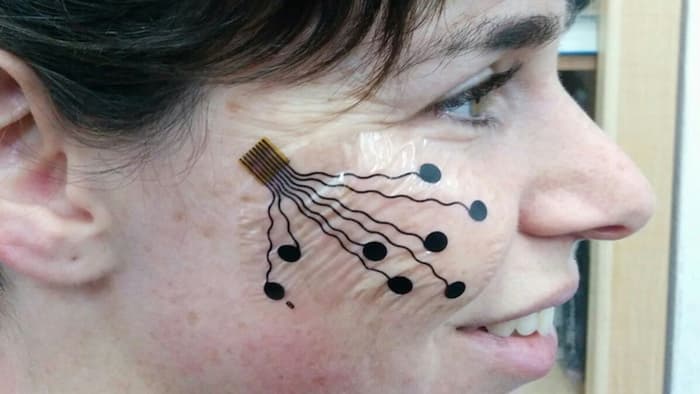


Electromyography procedures, which record the electrical signals of muscles to diagnose neuromuscular disorders, usually require the insertion of a needle electrode into the muscle itself. Obviously, that isn't exactly a pleasant experience, so a team at Tel Aviv University's (TAU's) Center for Nanoscience and Nanotechnology have developed a more comfortable and accessible alternative in the form of an electronic "tattoo" that unobtrusively monitors muscle activity, for a range of medical and commercial purposes.
Anyone who ever put on and forgot about a temporary tattoo as a kid will understand how unobtrusive the device is to wear, but this is a little more involved than the Road Runner rub-on that came with your cereal.
"Our 'electric tattoo' consists of three parts," explains Yael Hanein, the TAU professor who led the study. "A carbon electrode, an adhesive surface that sticks temporary tattoos to the skin and a nanotechnology-based conductive polymer coating, with special nano-topography, that enhances the electrode's performance."
That allows the user to attach the device onto the skin over the muscle that needs to be tracked, and forget about it. While they go about their day as usual, the electrode measures and records muscle activity, and is apparently able to pick up strong and steady signals from for several hours without irritating the skin.
Researchers at TAU have used the skin electrode to monitor the muscles of patients suffering from neurodegenerative diseases, and in future, the device could be used in rehabilitation for victims of stroke or brain injury to help regain muscle control, enabling amputees to control artificial limbs using remaining muscles, monitoring driver drowsiness and possibly even to map emotions.

"Advertisers, pollsters, media professionals and others – all want to test people's reactions to various products and situations," says Hanein. "Today, with no accurate scientific tools available, they rely mostly on inevitably subjective questionnaires. To address this need, researchers worldwide are trying to develop methods for mapping emotions by analyzing facial expressions, mostly via facial photos and smart software."
The electrodes could provide an alternative solution, by being placed on the face to monitor the electrical signals of the wearer's facial muscles to provide data about a subject's subconscious reactions that they may not otherwise share or be aware of.
Source: Gizmag
